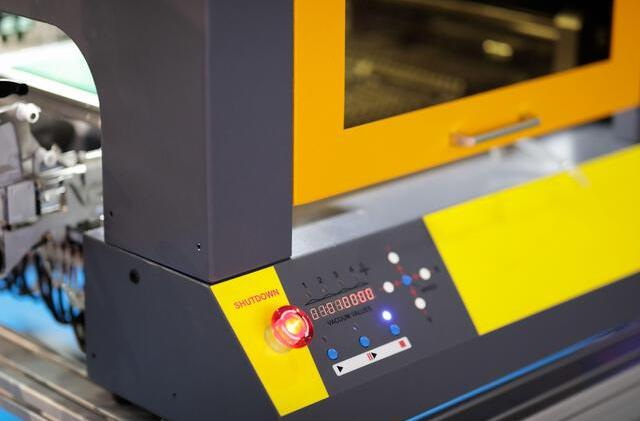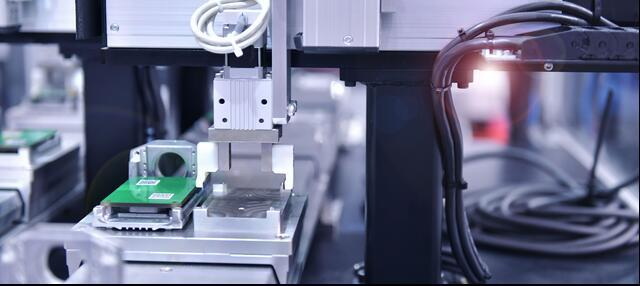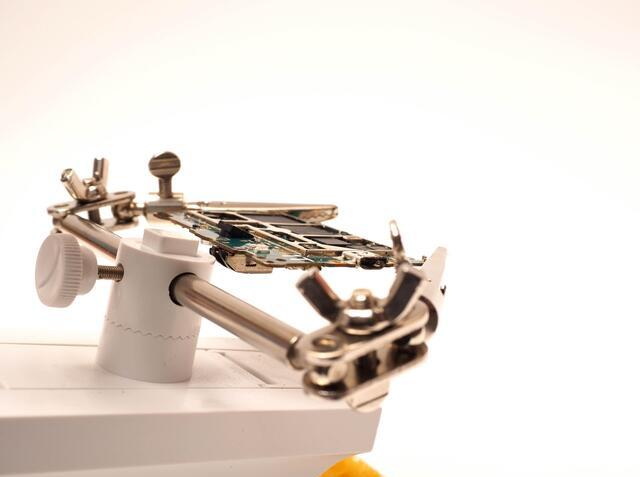Content Menu
● Understanding SMT Line Assembling
● Key Benefits of SMT Line Assembling
>> Increased Production Speed
>> Enhanced Precision
>> Flexibility and Scalability
>> Reduced Labor Costs
>> Higher Component Density
>> Improved Electrical Performance
>> Cost Efficiency
>> Enhanced Reliability and Durability
>> Environmental Benefits
● Additional Benefits of SMT Line Assembling
>> Miniaturization of Devices
>> Compatibility with Automation
>> High-Speed Signal Transmission
>> Simplified Production Process
>> Better Heat Dissipation
● Challenges Associated with SMT Line Assembling
● Conclusion
● FAQs
>> 1. What is Surface Mount Technology (SMT)?
>> 2. How does SMT improve production efficiency?
>> 3. What are some common applications of SMT?
>> 4. Can SMT components be used alongside through-hole components?
>> 5. What challenges does SMT face?
● Citations:
Surface Mount Technology (SMT) has revolutionized the electronics manufacturing industry by providing an efficient and effective method for assembling electronic components onto printed circuit boards (PCBs). This article delves into the key benefits of SMT line assembling, highlighting its advantages over traditional assembly methods, particularly through-hole technology (THT).

Understanding SMT Line Assembling
SMT involves mounting electronic components directly onto the surface of PCBs, eliminating the need for drilling holes. This technology utilizes automated equipment, such as solder paste printers, pick-and-place machines, and reflow ovens, to streamline the assembly process. The result is a faster, more precise, and cost-effective manufacturing method that meets the demands of modern electronics.
The SMT production lines consist of various machines working together to complete the PCB assembly process. These include:
- Solder Paste Printers: Apply a thin layer of solder paste to the PCB pads.
- Pick-and-Place Machines: Accurately position components on the PCB.
- Reflow Ovens: Melt solder to create electrical connections between components and the PCB.
- Automated Inspection Systems: Ensure quality control by detecting defects during assembly.
Key Benefits of SMT Line Assembling
Increased Production Speed
One of the primary advantages of SMT line assembling is its ability to significantly increase production speed. Automated systems can assemble thousands of components per hour, making SMT ideal for high-volume production environments. This rapid assembly process reduces lead times and allows manufacturers to meet market demands more efficiently.
Enhanced Precision
SMT lines utilize advanced machinery that ensures precise placement of components on PCBs. This high level of accuracy minimizes defects and improves overall product quality. Automated optical inspection systems further enhance quality control by detecting errors during the assembly process.
Flexibility and Scalability
SMT lines are highly adaptable, allowing manufacturers to easily switch between different product types and component sizes without extensive retooling. This flexibility is crucial in today's fast-paced market, where consumer preferences can change rapidly. Additionally, SMT lines can be scaled up or down based on production needs, providing manufacturers with a responsive solution to fluctuating demand.
Reduced Labor Costs
The automation inherent in SMT lines significantly lowers labor costs. By minimizing manual intervention, manufacturers can operate with fewer staff while maintaining high production levels. This efficiency not only reduces expenses but also mitigates the risk of human error during assembly.
Higher Component Density
SMT allows for a higher component density on PCBs compared to THT. Smaller surface mount devices (SMDs) can be placed closer together, enabling more complex circuit designs within a compact footprint. This is particularly beneficial for portable devices where space is at a premium.
Improved Electrical Performance
The shorter interconnection lengths in SMT assemblies result in better electrical performance due to reduced parasitic capacitance and inductance. This improvement leads to enhanced signal integrity and reduced electromagnetic interference (EMI), which are critical factors in high-frequency applications.
Cost Efficiency
While the initial setup costs for SMT lines may be higher due to the investment in automated machinery, the long-term savings are substantial. The reduction in labor costs, material waste, and production time translates into lower overall manufacturing costs. Moreover, the ability to produce smaller and lighter products can lead to savings in shipping and handling costs.

Enhanced Reliability and Durability
SMT components are generally more reliable than their through-hole counterparts because they are less prone to mechanical stress and damage from vibrations. The soldering process used in SMT also creates stronger connections that enhance the durability of electronic devices.
Environmental Benefits
SMT processes often result in less waste compared to traditional methods due to reduced material handling and fewer defective products. Additionally, the compact nature of SMT assemblies allows for smaller packaging and lower transportation emissions.
Additional Benefits of SMT Line Assembling
Miniaturization of Devices
As electronic devices become smaller and more compact, SMT plays a crucial role in enabling this miniaturization. Components designed for SMT are significantly smaller than those used in through-hole technology—often 60% smaller—allowing manufacturers to create thinner and lighter devices without sacrificing functionality[2][5].
Compatibility with Automation
SMT is highly compatible with automation technology. Processes such as design standardization, component serialization, pick-and-place mounting, and soldering can be fully automated[2][4]. This compatibility not only enhances efficiency but also reduces human errors that may occur during manual assembly.
High-Speed Signal Transmission
The design capabilities afforded by SMT allow for high-density PCBs that support quick signal transmission—essential for modern electronic applications[5][10]. With shorter lead lengths and reduced parasitic effects, SMT ensures that signals travel faster with minimal delay.
Simplified Production Process
The automation involved in SMT simplifies many aspects of production compared to traditional methods like THT[3][11]. There's no need for drilling holes or bending leads; instead, components can be placed directly onto the surface of the PCB using advanced machinery.
Better Heat Dissipation
Surface-mounted components typically dissipate heat more effectively than through-hole components due to their direct contact with the PCB surface[4][12]. This feature is particularly advantageous for high-power applications where heat management is critical.
Challenges Associated with SMT Line Assembling
While there are numerous benefits associated with SMT line assembling, there are also some challenges that manufacturers must consider:
- High Initial Investment: Setting up an automated SMT line requires significant capital investment in machinery and equipment.
- Complexity in Inspection: Due to the small size of SMDs and their numerous solder joints, inspecting these assemblies can be challenging[8][12]. Specialized equipment is often required for thorough inspections.
- Fragility of Components: SMDs are generally more fragile than through-hole components; they can be easily damaged during handling or installation[8].
- Limited Component Types: Not all electronic components are suitable for surface mounting; certain larger or specialized components may still require THT[12].
Conclusion
In summary, SMT line assembling offers numerous benefits that make it an essential technology in modern electronics manufacturing. From increased production speed and enhanced precision to cost efficiency and improved reliability, SMT has become the preferred choice for manufacturers looking to optimize their processes and meet consumer demands effectively.
As technology continues to advance, adopting efficient manufacturing techniques like SMT will only grow in importance, enabling companies to remain competitive in an ever-evolving market.

FAQs
1. What is Surface Mount Technology (SMT)?
Surface Mount Technology (SMT) is a method used in electronics manufacturing where components are mounted directly onto the surface of PCBs without drilling holes.
2. How does SMT improve production efficiency?
SMT improves production efficiency by automating the assembly process, allowing for faster component placement and reducing labor costs associated with manual assembly.
3. What are some common applications of SMT?
SMT is widely used in consumer electronics, telecommunications, medical devices, automotive systems, and industrial controls due to its versatility and efficiency.
4. Can SMT components be used alongside through-hole components?
Yes, SMT components can coexist with through-hole components on the same PCB, allowing manufacturers flexibility in design.
5. What challenges does SMT face?
While SMT offers many benefits, it also faces challenges such as potential soldering defects like tombstoning or cold solder joints if not properly managed during assembly.
Citations:
[1] https://www.smtfactory.com/what-is-an-smt-line-and-how-can-it-improve-your-pcb-assembly-process.html
[2] https://www.sierraassembly.com/blog/seven-key-benefits-of-surface-mount-technology-discussed/
[3] https://www.viasion.com/blog/smt-assembly-vs-through-hole-assembly-their-pros-and-cons/
[4] https://www.pcbasic.com/blog/smt_production_line.html
[5] https://levisonenterprises.com/5-advantages-to-using-smt/
[6] https://blog.matric.com/what-is-smt-assembly
[7] https://www.macrofab.com/blog/smt-assembly-vs-through-hole/
[8] https://www.pcb-hero.com/blogs/lisas-column/surface-mount-technology-advantages-and-disadvantages
[9] https://www.protoexpress.com/kb/smt-assembly/
[10] https://www.viasion.com/blog/smt-assembly-and-its-advantages/
[11] https://geospacemfg.com/blog/smt-assembly-technology/
[12] https://www.pcbpower.us/blog/unveiling-the-advantages-and-disadvantages-of-surface-mount-technology
[13] https://vectorbluehub.com/smt-assembly
[14] https://www.pcbway.com/blog/PCB_Assembly/Advantages_and_Disadvantages_of_Surface_Mounting_Technology.html
[15] https://www.wevolver.com/article/smt-process
[16] https://www.protoexpress.com/blog/good-not-so-good-sides-surface-mount-technology/
[17] https://www.pcbelec.com/smt-advantages-and-disadvantages.html
[18] https://www.pcbcart.com/article/content/smt-process-to-cost-reduction.html




















